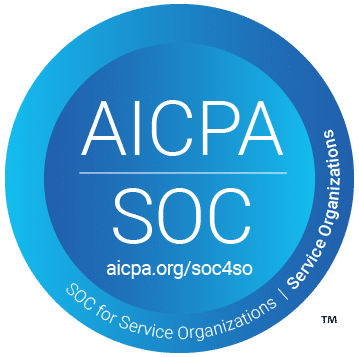
Have you ever noticed how no one thinks about backup plans until everything breaks down? That is exactly how most small businesses treat a disaster recovery plan (DRP). It sounds technical, expensive, or maybe unnecessary—until disaster hits.
A business network can crash. A cyberattack can lock systems. A power surge could corrupt files. Then, suddenly, customer data cannot be accessed, and payments cannot be processed. And that is when panic sets in.
A disaster recovery plan helps businesses to avoid that chaos. It is a step-by-step process to protect data, reduce downtime, and enable organizations to get back on track quickly.
This blog discusses key points that make a disaster recovery plan important for small businesses. It will also touch on how expert IT support can promote business continuity and a great reputation.
The Real Threats to Small Businesses
Cyberattacks often get the headlines. However, the danger runs deeper. For small businesses, the threats are everywhere and are usually invisible. A single ransomware attack can lock the entire system and demand thousands of dollars just to get access back.
A server crash during peak hours can freeze sales, interrupt operations, and cause permanent data loss. Then, there is human error. One employee clicks a bad link, and another deletes an important file. Passwords get reused. Backups don’t happen.
Hardware failure is another silent threat. Computers overheat and drives crash. If that data is not backed up, it could be gone for good. Even natural disasters like floods, fires, and power outages can wipe out local servers.
These examples are not just hearsay. A BDC cybersecurity survey in September 2024 confirms that small and medium-sized businesses across Canada are facing these threats.
- 61% of SMEs faced phishing attempts.
- 27% experienced malware.
- 12% suffered ransomware attacks or network intrusions.
- 7% dealt with data breaches.
A disaster recovery plan prepares businesses to face their threats head-on. It is by far more than a good risk management setup. It tends to be the backbone of business continuity.
What is a disaster recovery plan?
A disaster recovery plan is a business emergency playbook. It explains exactly what to do when things go wrong. This includes data loss, system crashes, or cyberattacks.
However, it is not the same as business continuity, which focuses on keeping your business running. A disaster recovery plan prioritizes getting IT systems back up fast. It includes steps for restoring data, rebooting servers, and regaining access to key tools.
Key parts of a good plan are Remote Monitoring Management (RMM), network monitoring, and Service Level Agreements (SLAs).
- RMM keeps an eye on systems around the clock, while network monitoring spots issues before they result in serious damage.
- An SLA sets clear expectations. This entails how fast IT providers will respond, how long recovery will take, and what support can be relied on during a crisis.
Business Continuity and Why It Matters
In Canada, downtime can cost thousands of dollars per hour. This is expensive for small businesses. Every minute offline means lost revenue and frustrated customers. Trust disappears fast.
A good recovery plan guarantees business continuity. This means companies can keep operations active even when tech fails. However, business continuity does not just entail bouncing back after a disaster. It is a proactive, ongoing process structured into a larger risk management strategy.
This means reducing risks and making sure companies can adapt quickly when faced with problems. To set up, business continuity requires expert IT support teams who understand systems’ functionality.
Compliance and Frameworks Should Be Prioritized
Canada’s Personal Information Protection and Electronic Documents Act (PIPEDA) is the law that sets rules for handling personal data. The policy mandates organizations in both light and critical industries to protect customers’ information carefully. There is no room for shortcuts.
Failure to adhere to Canada’s data policy can lead to fines, lawsuits, and loss of reputation. Small businesses feel this risk sharply. Customers want to know their data is safe and treated with respect.
A reliable disaster recovery plan ensures backups meet Canadian privacy rules, which include how they are stored, accessed, and restored.
NIST and ISO/IEC 27001
Cybersecurity frameworks are a set of guidelines and practices created to enable firms to protect data and IT systems. Two of the most popular frameworks are the National Institute of Standards and Technology (NIST) and ISO/IEC 27001, which set the standard for protecting data and systems for businesses in Ontario. They provide clear steps for identifying risks and managing incidents.
While they are assumed to be tools for big corporations, small businesses benefit just as much. Following these frameworks enables SMEs to adhere to a structured way to handle risk management and protect sensitive data. A standard data recovery plan in Canada fits within these frameworks.
Build It Before You Need It
Building an effective disaster recovery plan begins with understanding the current IT setup. Start by conducting a thorough audit. List all hardware, software, data sources, and network paths. Then, mark out daily operations and what systems would cause the biggest disruption if lost.
Next, set precise Recovery Time Objectives (RTOs). This means deciding how fast systems have to be back online after a disaster.
Also, identify the Recovery Point Objectives (RPOs). This is the maximum amount of data a company can afford to lose. Then, consult with a trusted Managed Service Provider like Connectability.
Connectability Powers Your Business to Be Secured and Prepared
Connectability stands out in Ontario’s crowded IT and cybersecurity market through its prioritization of proactive protection and a tested disaster recovery plan.
We don’t wait for problems to happen. Instead, we build custom IT support plans structured to fit different types of business sizes, industries, and specific risks. This means no generic solutions. We only have strategies designed just for your organization.
To keep businesses safe, our remote monitoring management tools work 24/7. They constantly scan networks, servers, and devices to catch glitches or threats early—even before business managers notice.
Network security is also important. This is why we use firewalls, encryption, and multi-layer defenses to keep data protected from hackers.
As a disaster recovery plan specialist, we understand that every minute of downtime costs money and trust. Therefore, business continuity is added to our protection to make sure operations are restored at all times.
We also provide an SLA agreement so response time and expert risk management services are guaranteed.
Connect with Connectability today. Call us at 647-930-2250, or contact us online so our experts can create a disaster recovery plan dedicated to your business’ operational risks.






